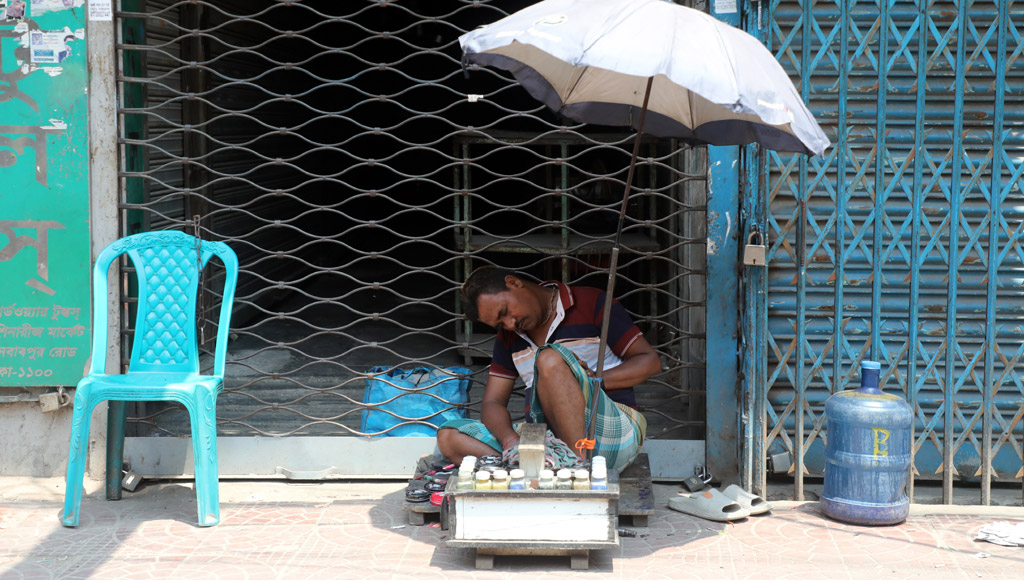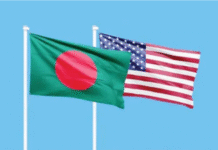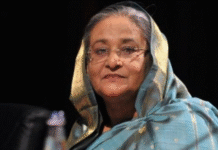
The ongoing heat condition continued for 27 days on Friday, the longest spell of heat Bangladesh has ever recorded since the country began keeping record in 1948.
The hot and dry weather condition is likely to prevail at least five more days, the Bangladesh Meteorological Department predicted on Friday, with a forecast of a break in the heat condition following rain on May 2.
Although the historical maximum temperature record still remains intact, the ongoing heat condition is potentially the most intense one for it has burned vast landscapes, of up to 13 districts, at 40C or above since it began on March 31.
The extreme heat condition unleashed hell upon earth for many, especially the poor, who suffered blazing sun while working under the open sky during day and intermittent power cuts at night.
Over the last few days, people gathered together in many parts of the country to offer special prayers or seek blessing of God in accordance with their beliefs to get a relief from the heatwave.
‘This has been a very long spell of heatwave,’ said Shaheenul Islam, meteorologist at the BMD, adding that it surpassed the previous heatwave record of 23 days made last year between the end of March and mid-April.
‘The ongoing heatwave is believed to have peaked,’ he said, forecasting chances of rain in parts of Bangladesh on May 2.
Last year, April saw hot condition for 18 days in a row. But this year there was not a single day that a heatwave did not exist in some parts of the country.
The ongoing hot condition significantly lessened on April 6 and retreated to pockets but it started to expand again, particularly from April 11, the day Eid-ul-Fitr was celebrated in the country.
A heatwave occurs when day temperature exceeds 36C, a weather phenomenon that does not occur evenly all over since the temperature changes depending on several factors—sun, wind and humidity.
A heatwave is upgraded to severe when temperature crosses 40C and very severe when it surpasses 42C.
A review of maximum temperature data released by the Bangladesh Meteorological Department revealed that the heatwave turned lethal after April 11 with day temperature frequently crossing 40C.
On April 17, day temperatures reached or exceeded 40C in six districts in northern and western Bangladesh.
On April 20, a severe to very severe heatwave swept 12 districts in central, northern, western and south-eastern Bangladesh, including Dhaka, where it was the hottest day in 64 years.
On April 25, the severe to very severe heat wave was spread to 13 districts.
On Friday, eight districts recorded severe to very severe heatwave with the country’s maximum temperature of 42.7C recorded in Chuadanga.
‘This is the longest heatwave observed among all Aprils since 1948,’ said meteorologist Muhammad Abul Kalam Mallik.
Heatwaves usually stay up to 14 days in a row, he said.
Last year, Bangladesh’s highest temperature of 43C was recorded in Pabna on April 17.
The highest-ever temperature of 45.1C was recorded in Rajshahi on May 18, 1972.
On Friday, Dhaka recorded its maximum temperature to be 38.1C.
New Age correspondent in Pabna reported that continuous extreme temperature took toll on people and animals in Pabna, killing birds in poultry farms in large numbers.
The Bangladesh Poultry Association on April 25 released an estimate about heatwave causing a loss of Tk 200 crore to small poultry farms over the last 10 days.
Adrienne Arsht-Rockefeller Foundation Resilience Center, a Washington-based non-government organisation, revealed earlier that heat and high humidity cause a loss in annual output in Dhaka of more than 8 per cent. The loss could reach 10 per cent by 2050, the foundation said.
Temperatures on road surfaces in Dhaka, filled with people and vehicles burning the world’s most low-graded petrol, could reach up to 60C, said the report.
Temperatures are typically 12 degrees higher inside tin-roofed homes and workplaces, the report added.
The Arsht-Rock report said that Dhaka was losing US$6 billion worth of labour productivity every year due to heat stress from extreme temperatures.
Last year, a policy brief released by the University of Leeds and the London School of Economics and Political Science said that the workforce and productivity of Bangladesh could be decimated by up to 46 per cent over the next six decades because of heat stress caused by global warming.
An intense power crisis compounded the impacts of the heatwave, leaving farmers in acute water crisis to irrigate their crop land, especially boro rice fields.
Agriculturists warned that production of all crops could drop by a fifth because of the ongoing heatwave affecting plants physiological activities such as photosynthesis and flowering amidst water crisis.
On Friday, data released by Power Grid of Bangladesh showed, load shedding stood at 1,554MW with 14,123MW generated against the demand of 15,750MW at 2:00am.
On Friday, a very severe heatwave was sweeping over the districts of Rajshahi, Chuadanga and Pabna while a severe heatwave gripped the districts of Tangail, Bogura, Bagerhat, Jashore and Kushtia, the BMD said.
A mild to moderate heatwave was sweeping over the rest parts of Dhaka, Rajshahi and Khulna divisions and the divisions of Rangpur, Mymensingh and Barishal and the districts of Maulvibazar, Rangamati, Chandpur, Noakhali, Feni and Bandarban.
The Directorate General of Health Services confirmed one more death from heat stroke in Jhenidah on Friday, taking the official death toll to five since April 22.
new age









